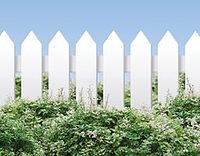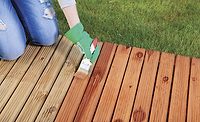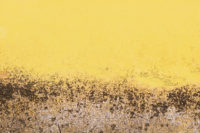Performance of Dry Film Preservatives Under Outdoor Conditions

There is currently a trend toward consolidation of dry film additives by some manufacturers. This trend should be approached with caution. Most of the preservatives on the market have a broad spectrum of activity and are toxic to microorganisms at low concentrations.
The behavior of the products in different formulations can vary dramatically. Intuitively, the solubility of the molecules in water and in the various organic materials in the formulation will affect rate of migration of the product out of the paint film and, therefore, affect the durability and efficacy of the product. Ideally, the migration will be fast enough to provide an effective dose of the product on the paint film surface, but slow enough to provide years of service.
Cornish et al1 recently reported on the leachability of various fungicides with water and how solubility affects fungicide performance, with the paint film becoming susceptible to fungal growth at the point of fungicide depletion. The porosity of the paint film was also studied for the effect on fungicide loss. Porosity of the paint film and water solubility of the fungicide undoubtedly are major factors in the loss of fungicide from the paint film during weathering. Other factors, such as the solubility of the preservative in organic additives, could also have a dramatic effect on the durability of the fungicide. For example, propylene glycol is present in most latex formulations at 3–6% by weight on wet paint. The solubilities of several common fungicides in propylene glycol at 25ºC are shown in the table.

Other materials in the formulation could also effect the distribution and migration of the fungicide such as coalescent, defoamer, and even surfactants. IPBC is over 20% soluble in octylphenoxypolyethoxyethanol (HLB 13.5).
With all the possible formulation variables and drying condition variables, it becomes apparent that the more soluble the fungicide is in the various organic additives, the more random the fungicide distribution and migration rate out of the paint film will be. One type of fungicide is not likely to perform best under all conditions in all paint formulations. If the influence of the substrate is also taken into consideration, the situation really becomes complex.
Choosing a dry film preservative that is not very soluble in any of the organic additives and also relatively low in water solubility would improve the long-term presence of the fungicide in the paint film and minimize the randomness of the distribution of the fungicide in the film. Still, the fungicide would have to migrate out of the paint film fast enough to maintain a toxic level on the surface of the paint film. The dry film preservative zinc pyrithione has low solubility in all the common organic paint additives and also has a low water solubility of 8 ppm at neutral pH. Zinc pyrithione typically provides very good long-term protection in flat paint. But in gloss paint, a fungicide like IPBC that migrates faster generally provides better protection than zinc pyrithione due to the low porosity of the film. The zinc pyrithione probably migrates out of gloss paint too slow to provide a high enough dosage at the surface to protect the paint film as well as some of the more soluble fungicides like IPBC.
After exposing a flat paint (40 PVC) for six months, a difference in the relative solubilities of zinc pyrithione and IPBC is apparent by comparing the sharpness of the lines between sections of zinc pyrithione, the blank, and the IPBC sections of the panel (see photo). The line between zinc pyrithione sections and the blank is sharp. The line between the blank and the IPBC sections is not as sharp. This is a visual indication of the IPBC migrating laterally into the negative control section. The panel is painted with two coats, no primer, facing vertical north in Miami. Panels are duplicates.
Conclusion
In an effort to minimize inventory of dry film preservatives, manufacturers should consider maintaining at least two types. One with a fast migration rate for use in less porous paint films and one with a slow migration rate for use in more porous paint films. IPBC and zinc pyrithione are good examples of each type and may be blended to maximize dry film protection.
For more information on dry-film preservatives, contact Arch Chemicals Inc., 350 Knotter Drive, Cheshire, CT 06410; phone 203/271.4134; fax 203/271.4050; e-mail pskap pock@archchemicals.com; visit www.arch biocides.com.
Links
Looking for a reprint of this article?
From high-res PDFs to custom plaques, order your copy today!






